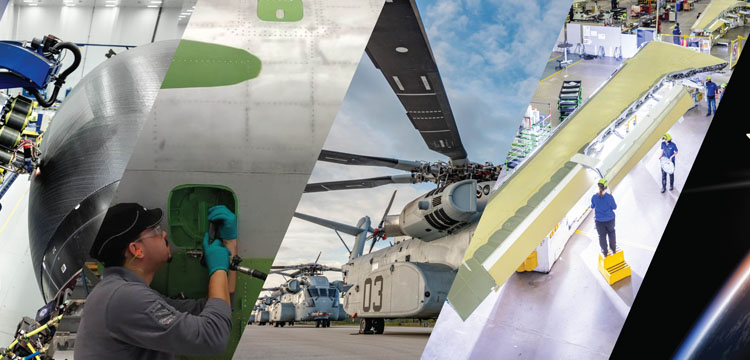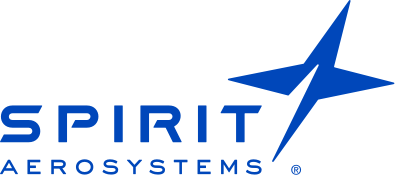

Spirit AeroSystems 2020 Annual Report

2020 was a transformational year for Spirit AeroSystems as we dealt with unparalleled challenges to our business, and to the aviation industry as a whole, with dual crises resulting from the grounding of the 737 MAX and the sudden drop in air travel due to the global pandemic. In short, it was a year unlike any other in the Company’s history. As we navigated the dual crises impacting Spirit, we focused on driving action in five key areas – protecting our team; adjusting costs to lower production levels; strengthening our liquidity; enhancing the productivity and efficiency of our operations; and diversifying our business. I am proud to share with you what the Spirit team accomplished.
Protecting Our Team
As a manufacturing company, the spread of COVID-19 presented a significant challenge for the health and safety of our team. While we quickly adopted a work-from-home policy for employees who could do their jobs remotely, the majority of our employees perform work that is directly related to the production of the structures and components we supply to our customers, including critical national security programs. To address the health and safety concerns for our workforce, Spirit put in place protocols across our global operations to help protect our team. These measures included requiring the use of masks; installation of thermal scanners; testing; air purification; and procedures for symptomatic employees or those who tested positive. These measures allowed us to continue operating and meeting our commitments, while taking steps to keep our employees safe.
Adjusting Costs to Lower Levels of Production
2020 began with production on the MAX program suspended by our customer. Ultimately, after several rate changes, we would build just 71 MAX ship sets – an 88 percent reduction compared to 2019 deliveries. Along with the continued grounding that resulted in rate reductions on the 737, the downturn in air travel caused by the global pandemic impacted Spirit’s entire commercial aviation business with lower production rates across all of our airplane programs due to the fall in demand for new airplanes.
The sudden drop in volume and the associated drop in revenue made it necessary for Spirit to align the Company’s cost structure to this lower demand. With lower production rates, which had previously been at historic highs on some airplane programs, we had to reduce employment in our commercial business by 8,000 people in 2020. We also aggressively eliminated other costs by reducing expenditures on purchased services and consolidating operations with an intent to close two of our sites. Overall, the Spirit team eliminated about $1 billion in annualized costs in the business – a 40 percent reduction from our 2019 non-material cost base.
Strengthening Liquidity
With the drop in revenue from lower production volumes, we quickly took a number of steps to strengthen our liquidity. Our first steps included reducing our quarterly cash dividend to a penny, suspending share repurchases, and deferring around $120 million in capital expenditures. Spirit twice raised money in the capital markets – once in April, raising $1.2 billion in senior secured second lien debt, and in the second half of the year, raising $900 million in senior secured first lien debt. In addition, we negotiated a $225 million discount on the acquisition of select assets from Bombardier and mutually agreed to terminate another planned acquisition. With decreased cash usage in the second half of the year, Spirit finished 2020 with around $1.9 billion cash on hand, providing us a strong foundation in a very difficult market.
Enhancing Productivity, Efficiency, Quality, and Safety
With an eye toward recovery of the aviation market, Spirit continued to invest in improvements to make our operations safer, more agile, and environmentally friendly. We drove increased use of automation and digitization across our production system to better utilize factory floor space, improve quality, and improve factory flow. Along with this emphasis on improving efficiency, we have renewed our focus on quality in support of our customers across Spirit’s global operations.

Earlier in 2020, we stood up Spirit’s new Global Digital Logistics Center (GDLC), consolidating 500,000 square feet of warehouse space into a single, seven-story 150,000 square foot building that houses two million parts. Now fully operational, the GDLC is making significant improvements to overall production system health and product quality. We expect these benefits to increase as production rates rise.
In our Wichita facility where we build the 737, we began implementing an automated assembly line for floor beams, which we expect to improve quality and our ability to manage the hundreds of different configurations for various models of the MAX. Also, we made improvements to our A320 production with the application of new, state-of-the-art resin transfer molding technology to the build process for A320 spoilers performed by our team in Prestwick.
We made improvements to the sustainability of our global operations as part of our effort to use more renewable energy sources as well. In 2020, we began a journey to power Spirit’s largest operations in Wichita by harnessing the wind. When this project is complete later in 2021, our 12.8 million square foot Wichita facility will be 100 percent powered by wind. At our Belfast facility, which has one of the largest roof mounted solar arrays in the region, 70 percent of the operation’s electricity came from clean energy in 2020.
Diversifying our Business
Despite the headwinds to our business, we continued to find growth opportunities for our workforce as we made progress with the strategic transformation to diversify Spirit’s portfolio. One opportunity that arose as a result of the pandemic was Spirit’s partnership with Vyaire Medical to produce critical care ventilators. In a span of about six weeks, Spirit stood up a facility to fully produce these ventilators. Applying our considerable industrial expertise, Spirit employees built and delivered nearly 20,000 ventilators to help combat the global pandemic.
Our defense business continued its expansion as well in 2020, growing by 20 percent for the year. With the downturn in commercial aviation, we were able to shift people from our commercial airplane programs to support the growing statement of work with our defense customers.
Also, we are using the open capacity that resulted from the commercial aviation downturn to pursue more defense work and move us closer to our goal of achieving $1 billion in revenue from our defense business by the mid-2020s.
Through strategic acquisitions, Spirit added new capabilities and customers in 2020. With the acquisition of Fiber Materials Inc., Spirit now offers expertise in technology for high temperature materials and composites to defense customers. Combined with our industrial expertise, it’s a powerful combination that positions Spirit well in burgeoning areas of the defense market such as hypersonic weapon systems.
We also made great strides diversifying Spirit’s commercial business with our acquisition of select assets of Bombardier’s aerostructures and aftermarket business. The transaction included facilities in Belfast, Casablanca, and Dallas. In particular, the new Airbus content on the A220 built in Belfast includes the entire integrated composite wing for the aircraft. This type of expertise will be critical for the future of next-generation aircraft. Along with expanded Airbus work content, this acquisition increased Spirit’s work statement in the business jet market by roughly four times and essentially doubled Spirit’s aftermarket business.
Innovation also played a role in Spirit’s efforts to diversify. Leveraging our deep knowledge in design and manufacturing of structures, we won new business with Virgin Hyperloop and Aerion Supersonic. These companies are bringing innovative solutions to the transportation market and Spirit will be there with them to make these breakthrough technologies a reality.
We expect our efforts to diversify Spirit’s business to show in our revenue numbers as well. In 2021, we anticipate revenue from our Boeing work to account for 44 percent, Airbus to account for 23 percent, defense to account for 18 percent, business/regional jets to bring in 8 percent and aftermarket 7 percent. This is a significant change compared to our 2019 revenue spread across these customers and markets.

Emerging Stronger
We ended the year with regulators in the United States clearing the way for the 737 MAX to return to service, putting an end to the 20-month grounding of the airplane. Other global regulators soon followed. This puts Spirit on a gradual path to begin increasing production as we support our customer’s efforts to ramp up MAX production to 31 airplanes per month in early 2022.
Throughout an incredibly challenging year, we held firmly to our Company’s core values – Transparency, Collaboration and Inspiration – as we navigated the many difficulties we faced. Those values are also our guide as we continue to build an inclusive culture where everyone has the opportunity to contribute and succeed.
The Spirit team has entered 2021 with a clear path forward as a more diversified, global, and balanced company. Moving ahead our focus is to continue diversifying Spirit’s portfolio; begin to de-lever over the next two to three years; and drive improvement in our segment margins to previous targets. With our efforts to strategically transform our Company, we are confident Spirit has emerged stronger from the challenges of 2020.

Thomas C. Gentile III, President and CEO, Spirit AeroSystems




